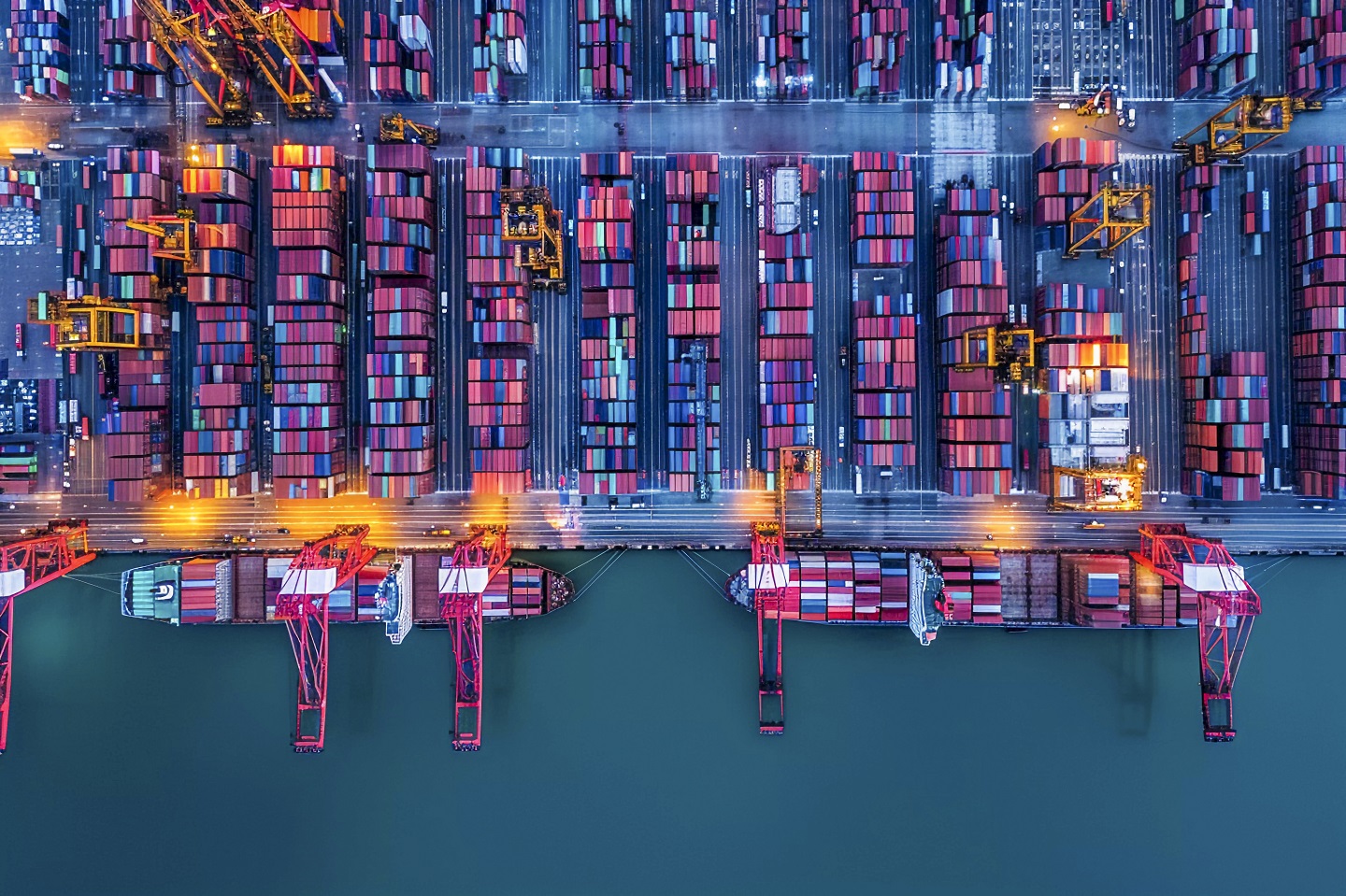- By China Top Freight
- December 25, 2024
- International Transportation News
December 24, 2024 – Source: Shanghai Release
On the morning of December 22, at the Yangshan Phase IV Automated Terminal of Shanghai Port, a red-colored container was lifted from an Automated Guided Vehicle (AGV) and precisely placed onto the deck of an ocean-going vessel by remote-controlled crane. With this successful operation, Shanghai Port achieved the milestone of handling its 50 millionth TEU (Twenty-foot Equivalent Unit) in 2024, setting a new global record for container throughput and is poised to maintain its position as the world’s busiest port for the 15th consecutive year.
This remarkable achievement marks a new chapter in the development of Shanghai’s International Shipping Center, advancing its position to the next level.
Looking back on the development of Shanghai Port’s container business, what was once the farmland of Waigaoqiao and the small, remote island of Yangshan has now become a prominent location on the global shipping map. Since the start of container transport in 1978, Shanghai Port’s container throughput has grown at a rapid pace. In 1978, the “Pingxiangcheng” vessel set sail from Shanghai Port with just 7,951 TEUs.
By 1994, Shanghai Port’s container throughput exceeded 1 million TEUs, and by 1995, it ranked among the top 20 global container ports for the first time. In 2003, Shanghai Port’s container throughput surpassed 10 million TEUs, marking a historic leap.
Subsequent milestones followed, with Shanghai Port surpassing 20 million TEUs in 2006, 30 million in 2011, and 40 million in 2017. Now, Shanghai Port has once again reached a historic peak with 50 million TEUs, continuing to solidify its position as the world’s top port, a status it has held since 2010.
In 2024, Shanghai International Port Group has taken the lead in advancing the city’s international shipping center, enhancing the country’s strategic influence by implementing the “South Linking, North Integrating, West Expanding” strategy. This includes deepening cooperation with global liner companies, optimizing route networks, and increasing transshipment efficiency. As a result, international transshipment volume is expected to grow by over 20%, surpassing 7 million TEUs for the year. Additionally, new business initiatives, including coastal pick-up, international consolidation, and the “9610” cross-border e-commerce program, are driving container volume growth.
The Shanghai International Port Group has further strengthened regional cooperation, working with 22 ports along the Yangtze River, including 16 ports in the Yangtze River Delta. This cooperation has enhanced the synergy between the main port and inland ports, boosting logistical efficiency.
Moreover, continuous improvements in the port’s transportation system have provided robust momentum for the growth of container throughput. This year, the ratio of water-to-water transshipment at Shanghai Port is expected to reach 60%, setting a new record. The sea-rail intermodal service, launched in 2019, has become a regular feature, with over 10 daily services running smoothly. This year, the intermodal volume is expected to exceed 900,000 TEUs, representing a 40% increase, effectively boosting Shanghai’s connectivity to inland regions.
The continuous growth in container throughput underscores Shanghai Port’s position as a world-class maritime hub. Today, Shanghai’s International Shipping Center ranks among the top three global shipping cities for comprehensive strength, maintaining its place in the top three for five consecutive years. Shanghai Port operates nearly 350 international routes, covering over 700 ports in more than 200 countries and regions worldwide. For 13 consecutive years, Shanghai has held the top spot in global port connectivity. Additionally, the Yangshan Port area has ranked first in the Global Container Port Performance Index (CPPI) for two consecutive years.
Disclaimer: This article is reproduced by China Top Freight from other media for reference only, which does not mean that China Top Freight endorses its views or confirms the accuracy of its content. The information provided is for reference only and does not constitute investment advice.


